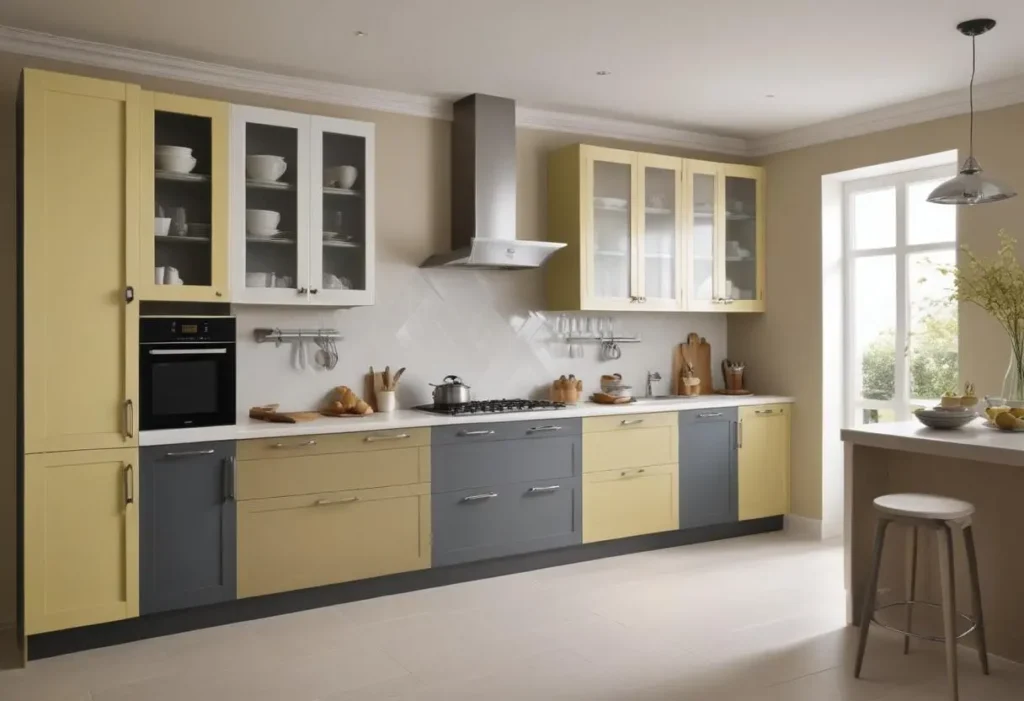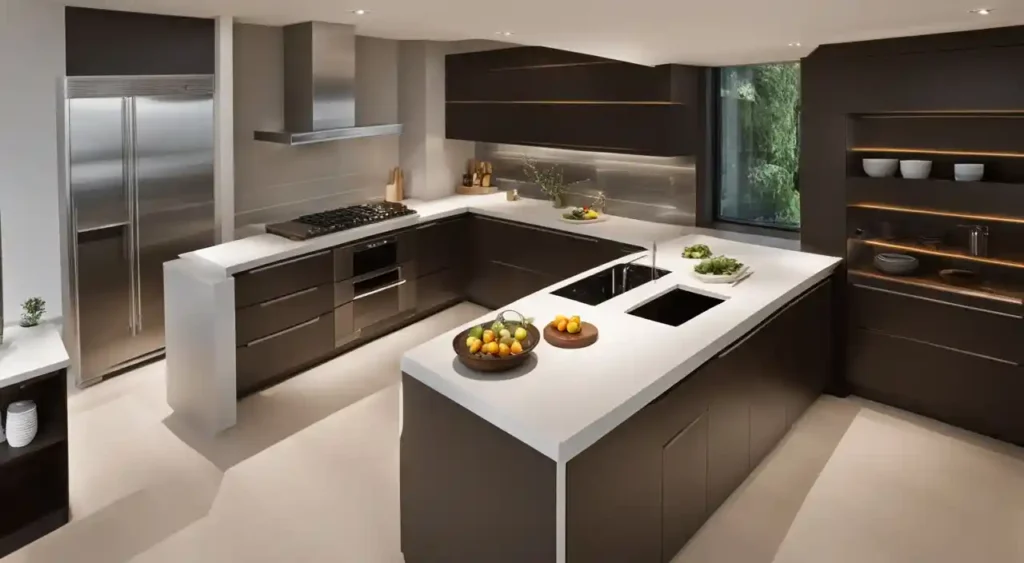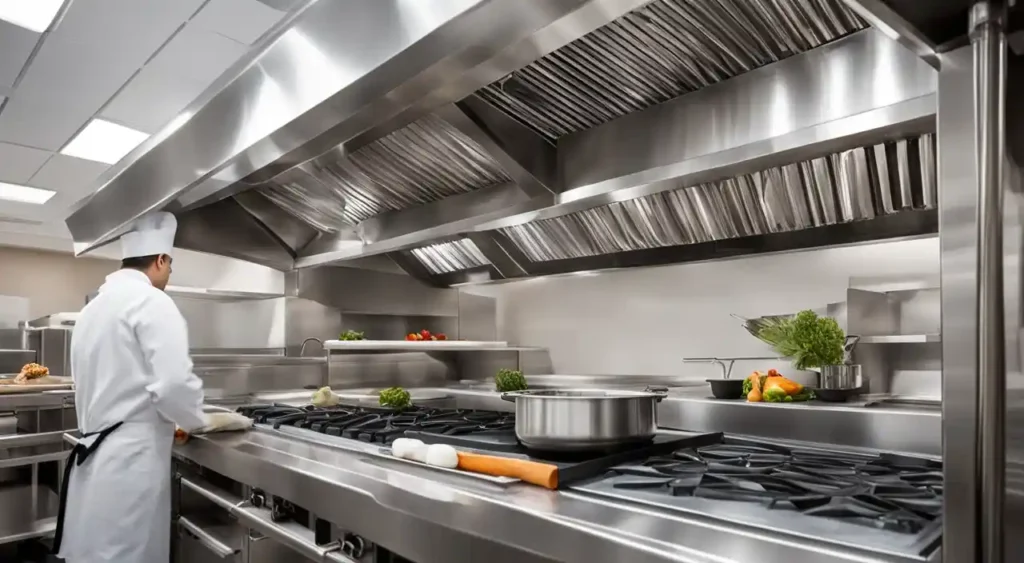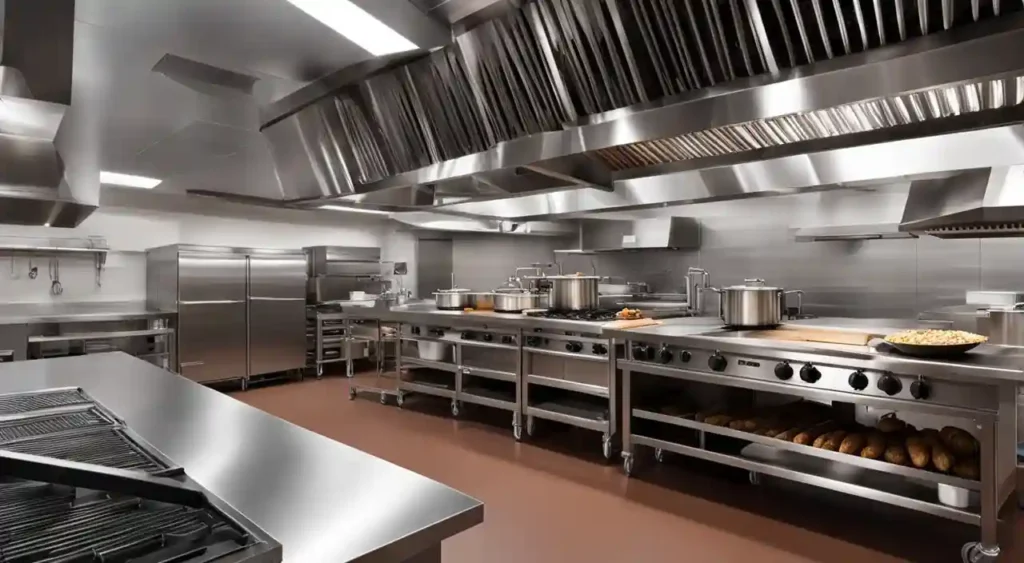Can AC Be Used in the Kitchen
Updated: 11 August 2024
64
Can AC Be Used in the Kitchen
The modern kitchen is the heart of the home, a hub of activity where delicious meals are prepared and shared. But with all the heat-generating appliances and busy chefs, the kitchen can quickly become an uncomfortably warm environment. As homeowners seek ways to optimize their kitchen cooling, the question arises: can air conditioning be effectively utilized in this high-heat space? In this article, we’ll explore the potential benefits and challenges of implementing kitchen cooling through air conditioning, providing insights to help create a more comfortable and efficient culinary environment.
Commercial kitchens are busy places, especially in the summer. They can get very hot because of all the appliances. Keeping the kitchen cool is important for the staff’s comfort and safety, as well as for the food quality.
You can also read:
Key Takeaways
- Temperatures in commercial kitchens can reach up to 105°F (40-45°C) during the summer season.
- Efficient HVAC systems and proper ventilation are essential for maintaining safe food-handling temperatures.
- Combining fans, thermometers, and staff education can help optimize cooling and prevent heat-related illnesses.
- Investing in energy-efficient equipment and proper insulation can reduce heat generation and infiltration.
- Air conditioning systems can significantly improve comfort and create a pleasant working environment in commercial kitchens.
Keeping a Commercial Kitchen Cool: A Challenge

Keeping a commercial kitchen cool is a big challenge. These kitchens work hard, with lots of heat from appliances like ovens and stoves. Add in walk-in fridges, and managing the heat gets even harder.
Features of a Commercial Kitchen: Heat Generating Issues
Commercial kitchens are always busy, often open for many hours with little rest. Many appliances work at once, making a lot of heat. This heat makes it tough to keep the kitchen a comfortable place for staff.
Effective Kitchen Cooling Methods
- Good ventilation is key for cooling in commercial kitchens. Keeping extractor hoods clean helps remove hot air well.
- Good ductwork and fans help move hot air out, keeping air flowing well.
- Systems like Split-System Air Conditioners and Ducted Air Conditioning cool specific areas. Portable Air Conditioners help with hot spots too.
By using ventilation and air conditioning, restaurants can make kitchens more comfortable and efficient. This helps staff and customers alike.
Ventilation: The Backbone of Kitchen Cooling
Proper commercial kitchen ventilation is key to keeping a kitchen cool. It’s important to install strong kitchen exhaust hoods above cooking areas. These hoods pull heat away from the cooking source.
Using kitchen ductwork and kitchen fans helps move hot air out. This keeps the kitchen cool and makes sure air keeps moving. It’s vital for air circulation in the kitchen.

An effective kitchen ventilation system keeps the kitchen a great place to work. It removes heat, smoke, and smells. This keeps the commercial kitchen cool and well-ventilated, even when it’s busy.
Keeping kitchen exhaust hoods and ductwork clean is crucial. It makes the kitchen ventilation system work better. This improves cooling, air quality, cuts down on fire risks, and makes equipment last longer.
By choosing a good commercial kitchen ventilation system, restaurants can make their kitchens better for staff. It makes cooking safer, more efficient, and saves money.
Air Conditioning Systems for Kitchen Spaces

Air conditioning systems are key for keeping commercial kitchens cool and clean. They help remove heat and keep the air fresh. There are many cooling options for kitchens, each with its own benefits.
Split-System Air Conditioners
Split-system air conditioners are a top pick for commercial kitchen air conditioning. They have an indoor and outdoor unit for easy setup without big changes. These AC units are energy-efficient and cool specific kitchen areas well.
Ducted Air Conditioning
Ducted air conditioning is great for big kitchens. It sends cool air all over the kitchen. This system uses a central unit and ducts to spread the air. It’s a bit harder to set up but gives better comfort and control.
Portable Air Conditioners
Portable air conditioners are good for kitchen ac units, especially for hot spots or short-term needs. They’re easy to move and set up anywhere. But, they’re not the best choice for long-term commercial kitchen air conditioning.
Choosing the right air conditioning system depends on the kitchen size, the heat from equipment, and how much cooling and air quality you need. Look at ductless mini splits, refrigerant-based cooling, and thermoelectric cooling options to find the best fit for your kitchen.
Additional Cooling Strategies for Ac Kitchen

Keeping a commercial kitchen cool is crucial. Using proper ventilation and air conditioning is key. But, there are more ways to keep your kitchen at a good temperature.
Investing in good kitchen insulation and heat-reflective materials can make a big difference. These steps help stop heat from moving around the kitchen.
Insulation and Heat-Reflective Materials
Insulating walls, ceilings, and areas near cooking appliances stops heat from spreading. Choosing countertops and surfaces that reflect heat instead of absorbing it also helps. These changes, along with good ventilation and air conditioning, make the kitchen cooler.
Task Scheduling and Staff Comfort
Planning kitchen tasks to reduce the use of appliances that make a lot of heat helps keep the kitchen cool. Encouraging staff to take breaks in cooler spots and drink plenty of water also boosts their comfort. This supports your kitchen’s cooling efforts.
Using these extra cooling methods with good ventilation and air conditioning makes the kitchen a better place for your team. It also makes sure your customers have a nice experience.
The Benefits of Evaporative Coolers for Ac Kitchen

Evaporative coolers are a great choice for cooling commercial kitchens. They bring in fresh, cool air and add moisture. This helps get rid of odors and makes the air cleaner, without the need for complex ductwork or high energy use.
Evaporative coolers are very efficient. They cost less to install than central air conditioners and use less energy. This means big savings for business owners, making them a smart choice over traditional HVAC systems.
They work well in hot and dry places, like many commercial kitchens. The cooling process adds moisture to the air. This helps keep food fresh and protects equipment from damage in dry climates.
Keeping evaporative coolers running smoothly is easy and cheap. Cleaning the cooling pads and checking the water pump is less expensive than HVAC maintenance. This adds to their cost-effectiveness in commercial kitchens.
Evaporative coolers are a strong alternative to traditional HVAC systems for commercial kitchens. They are energy-efficient, cost-effective, and improve air quality. They keep commercial kitchens cool and comfortable in a practical way.
Conclusion
Keeping a commercial kitchen cool and efficient is key to success. By tackling the heat from kitchen equipment, owners can use ventilation, air conditioning, and other cooling methods. This makes the kitchen a better place to work.
Using cooling solutions like split-system air conditioners and ducted systems helps control temperature and air quality. Adding energy-efficient evaporative coolers is also a good idea. Plus, keeping the kitchen well-insulated and maintaining the HVAC system helps make cooling more effective and lasting.
Investing in the right cooling solutions is important for a commercial kitchen. It keeps staff safe and comfortable, food fresh, and operations efficient. With the right approach to cooling, kitchens can do well even in hot places. They can create a great work environment for their culinary teams.
FAQ
What are the key features of a commercial kitchen that contribute to heat generation?
Commercial kitchens are built to make a lot of food quickly. They have ovens, stoves, fryers, grills, and dishwashers that get very hot. Walk-in fridges and freezers also add to the heat. With so much food being made, many appliances run at once, making the kitchen very warm.
What are the effective methods to keep a commercial kitchen cool?
Keeping a kitchen cool requires good ventilation and air conditioning. Strong extractor hoods and well-designed ducts remove heat. Air conditioning, like split-system or ducted, keeps the kitchen at a comfortable temperature.
Why is proper ventilation the backbone of any cooling strategy in a commercial kitchen?
Proper ventilation is key to cooling a commercial kitchen. It takes heat away from the cooking area. Using strong extractor hoods and good ductwork moves hot air out. This keeps air flowing well, making the kitchen cooler.
What are the different types of air conditioning systems suitable for commercial kitchens?
Commercial kitchens can use different air conditioning systems. Split-system air conditioners are efficient and easy to install. Ducted air conditioning is good for bigger kitchens. Portable air conditioners help cool hot spots temporarily.
What are some additional strategies to keep a commercial kitchen cool?
To keep a kitchen cool, insulate walls, ceilings, and appliances to stop heat from spreading. Use materials that reflect heat instead of absorbing it. Plan kitchen tasks to use fewer appliances at once.
Encourage staff to take breaks in cooler areas and drink plenty of water. These steps help keep staff comfortable and the kitchen cool.
What are the benefits of using evaporative coolers in a commercial kitchen?
Evaporative coolers are great for cooling commercial kitchens. They bring in fresh, cool air and add moisture. This improves air quality and reduces odors without the need for complex ductwork or high energy use.
Please Write Your Comments